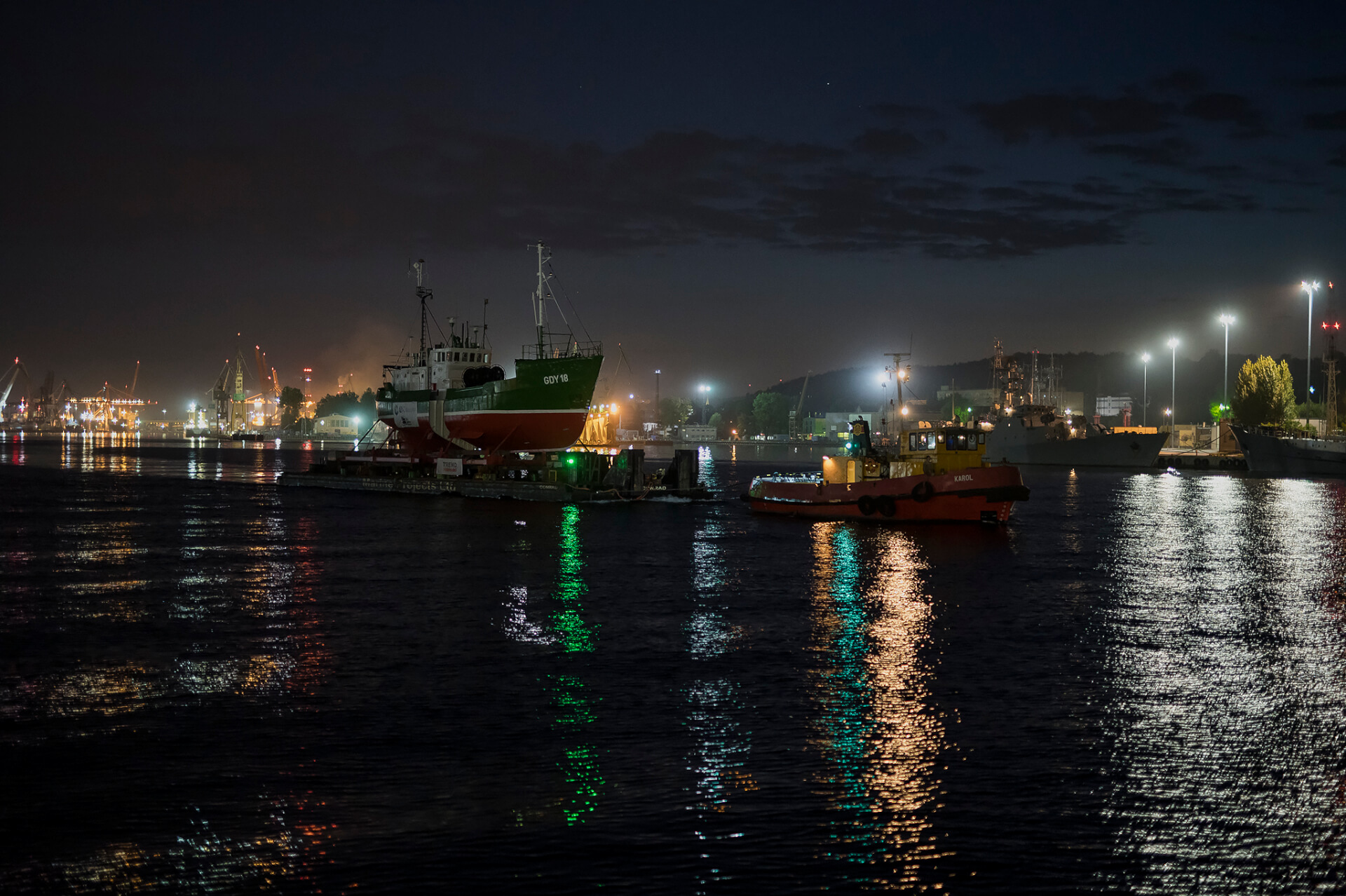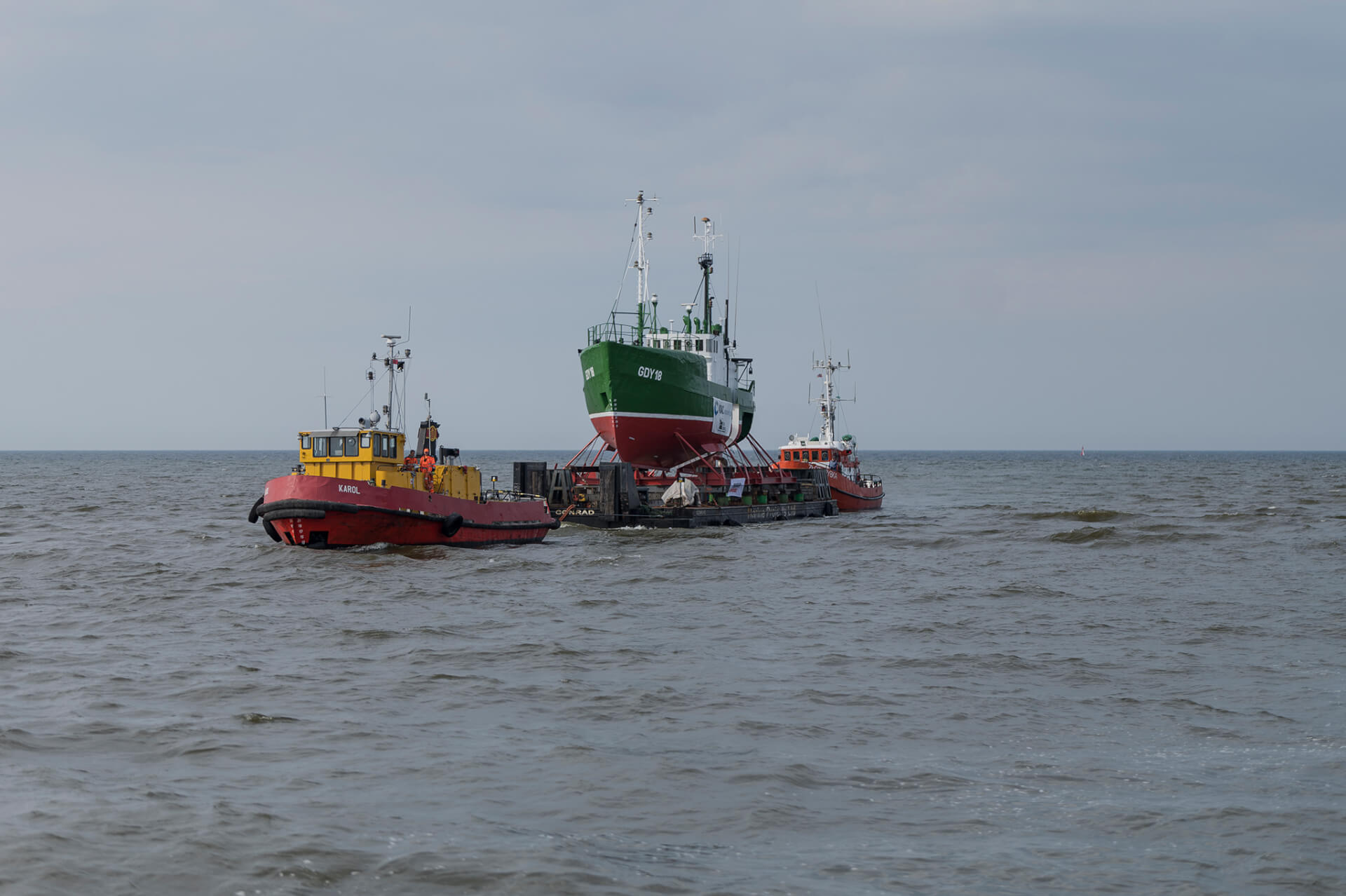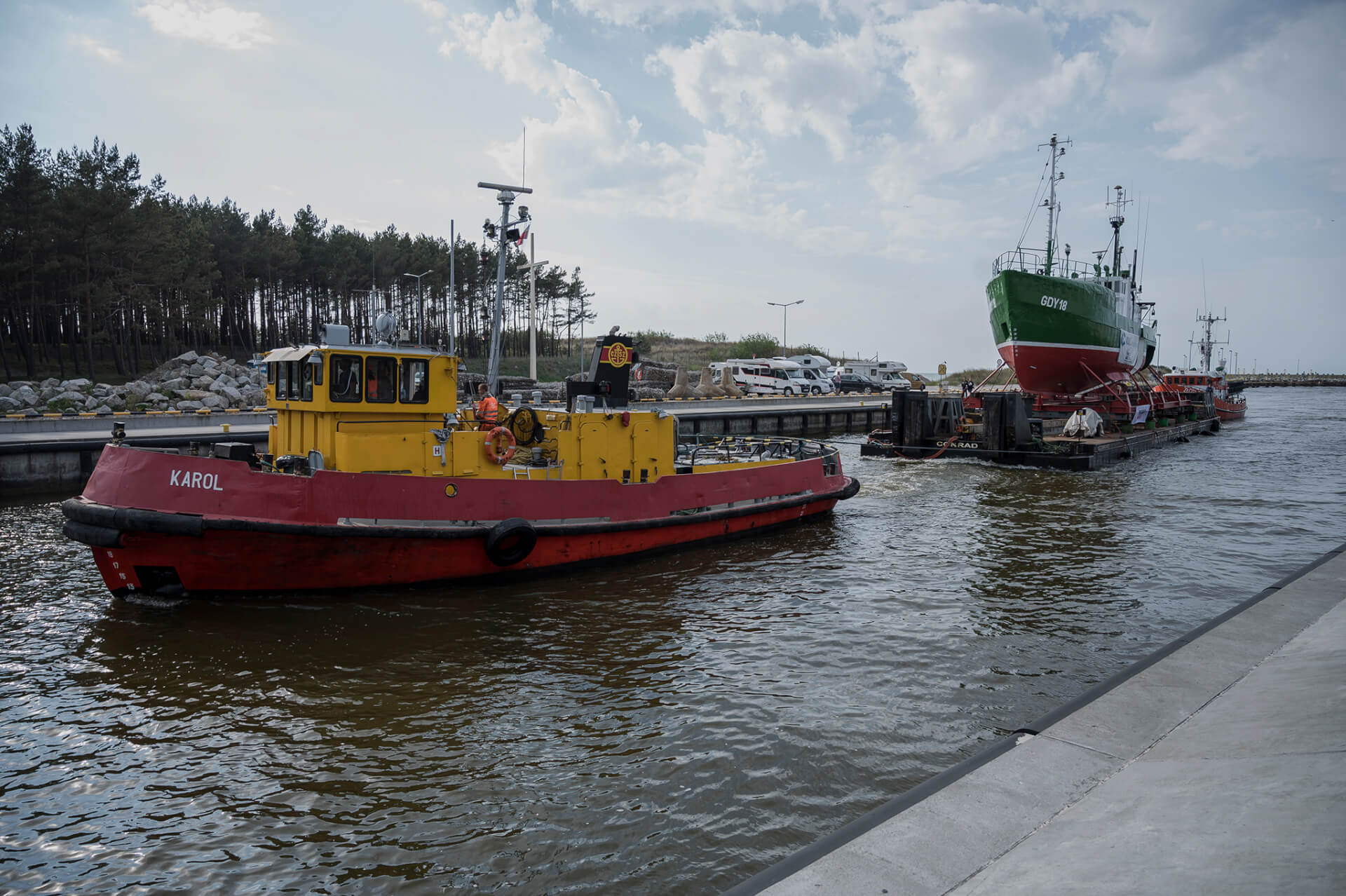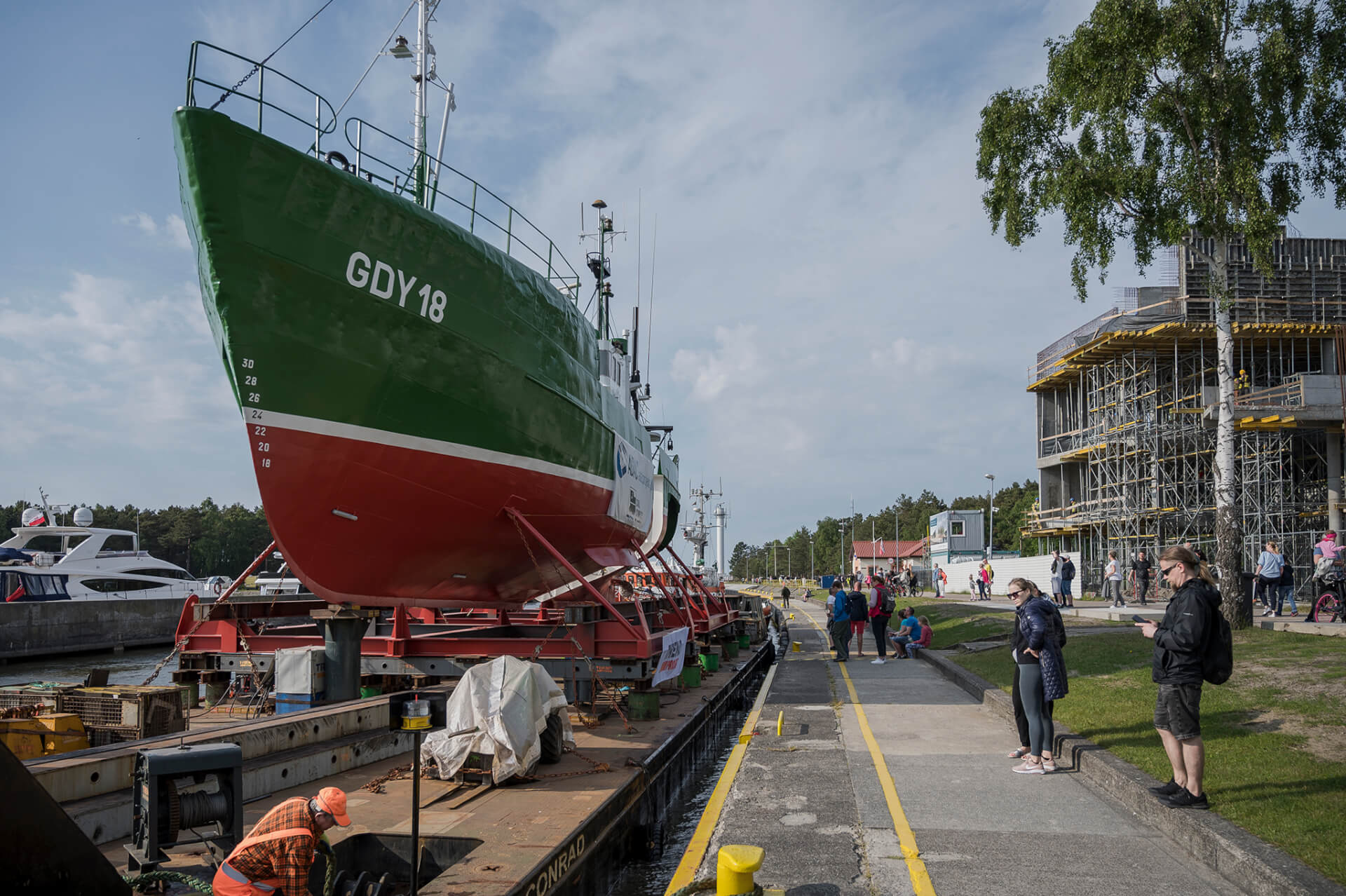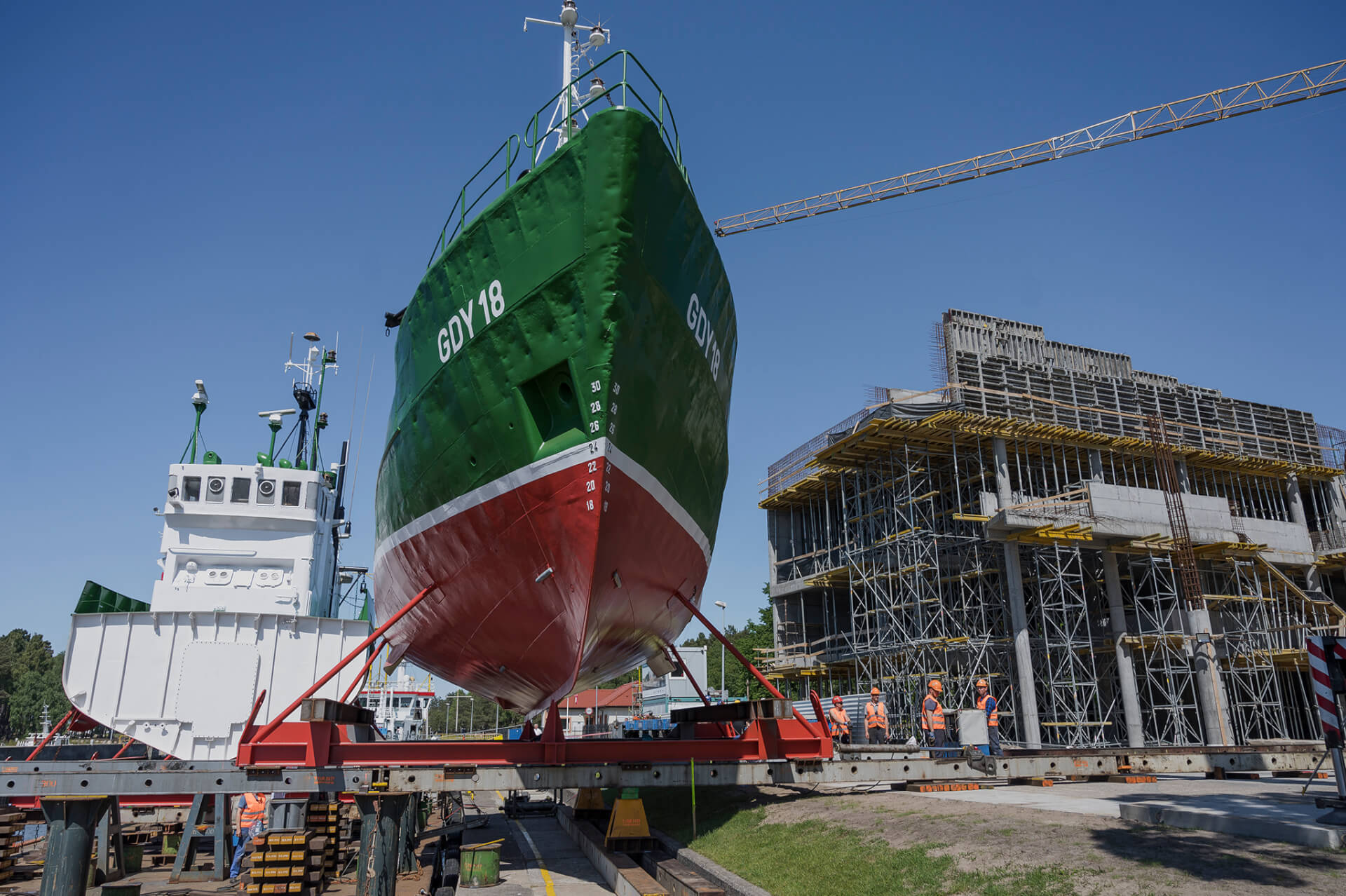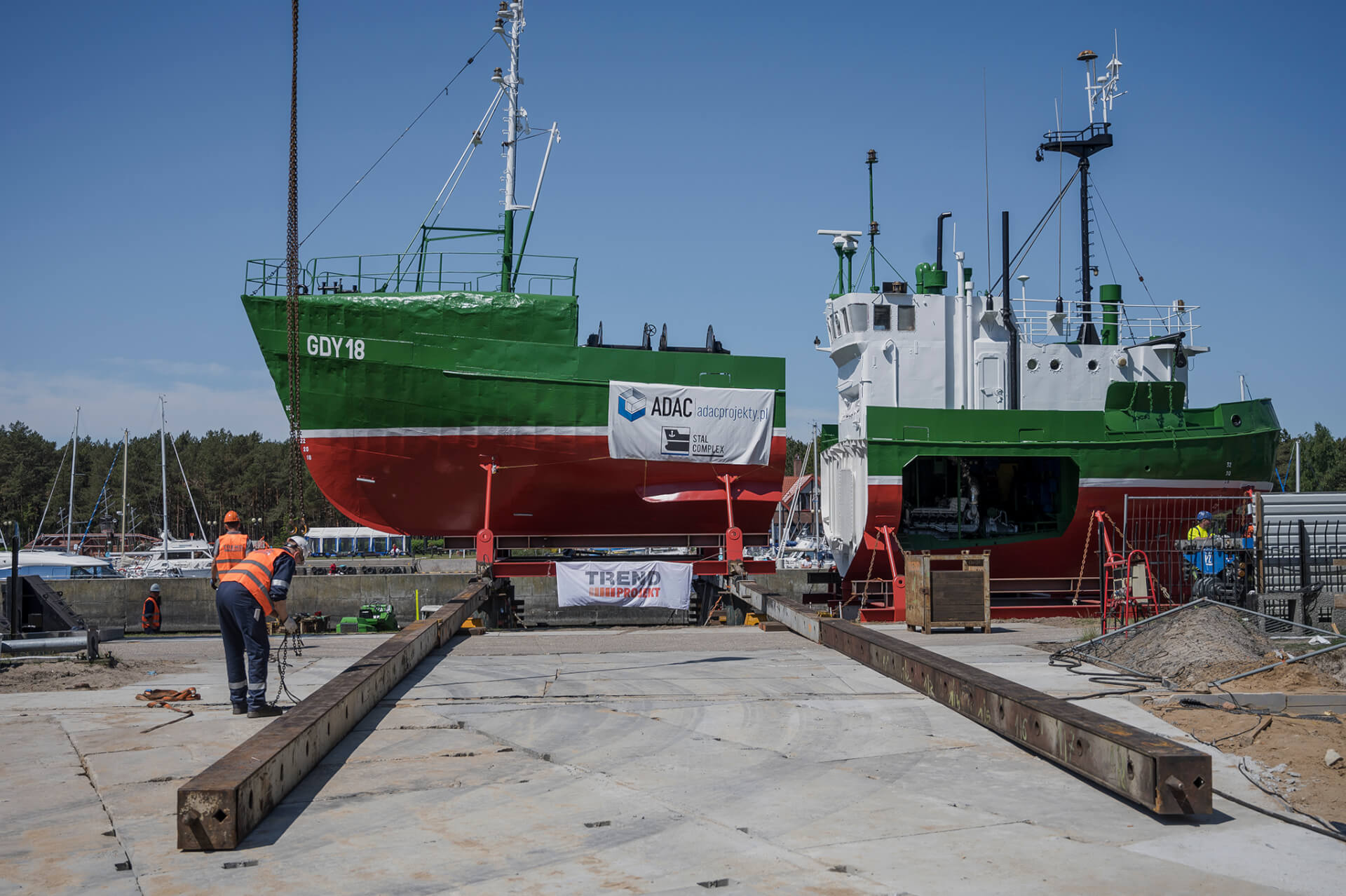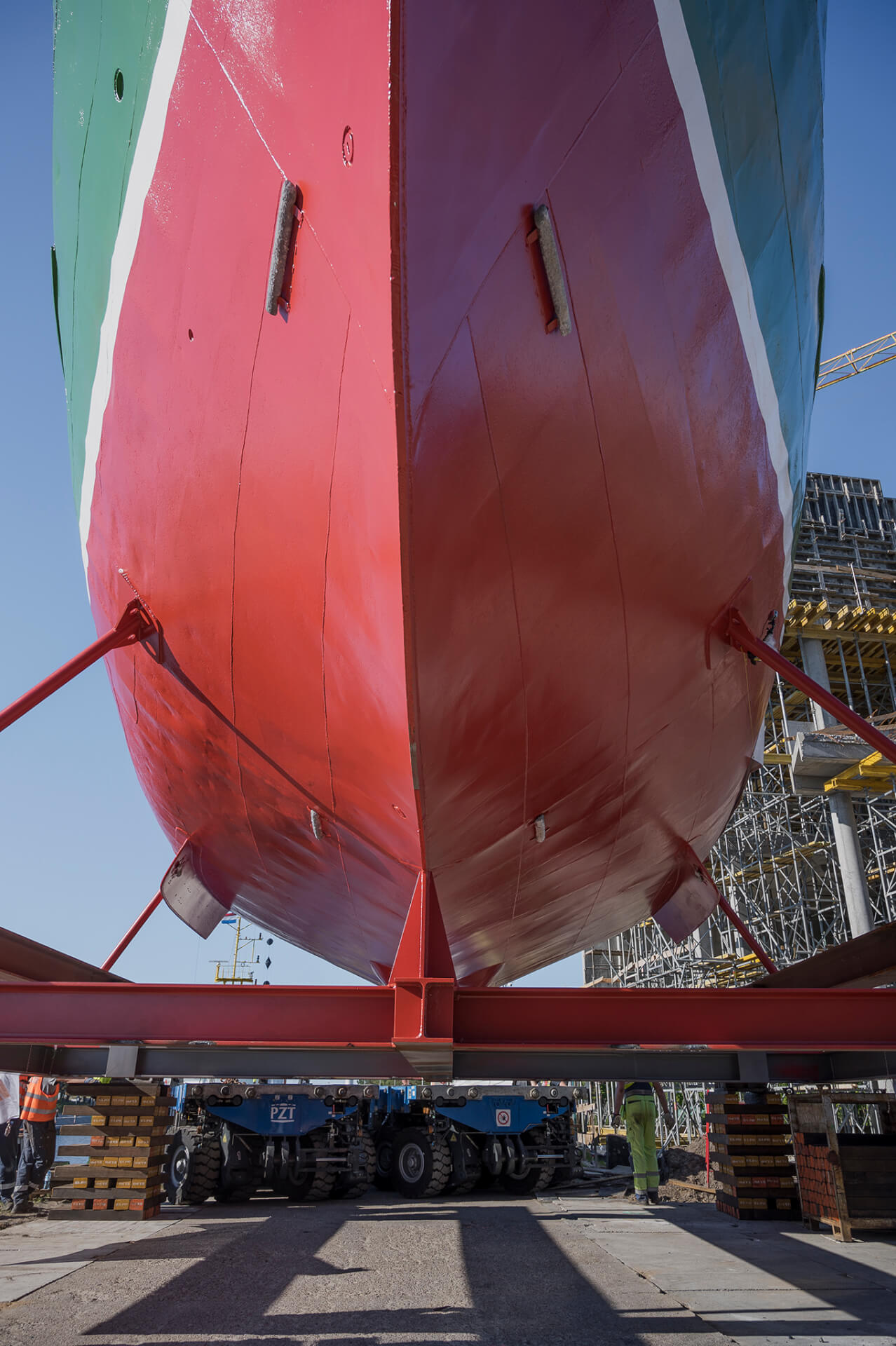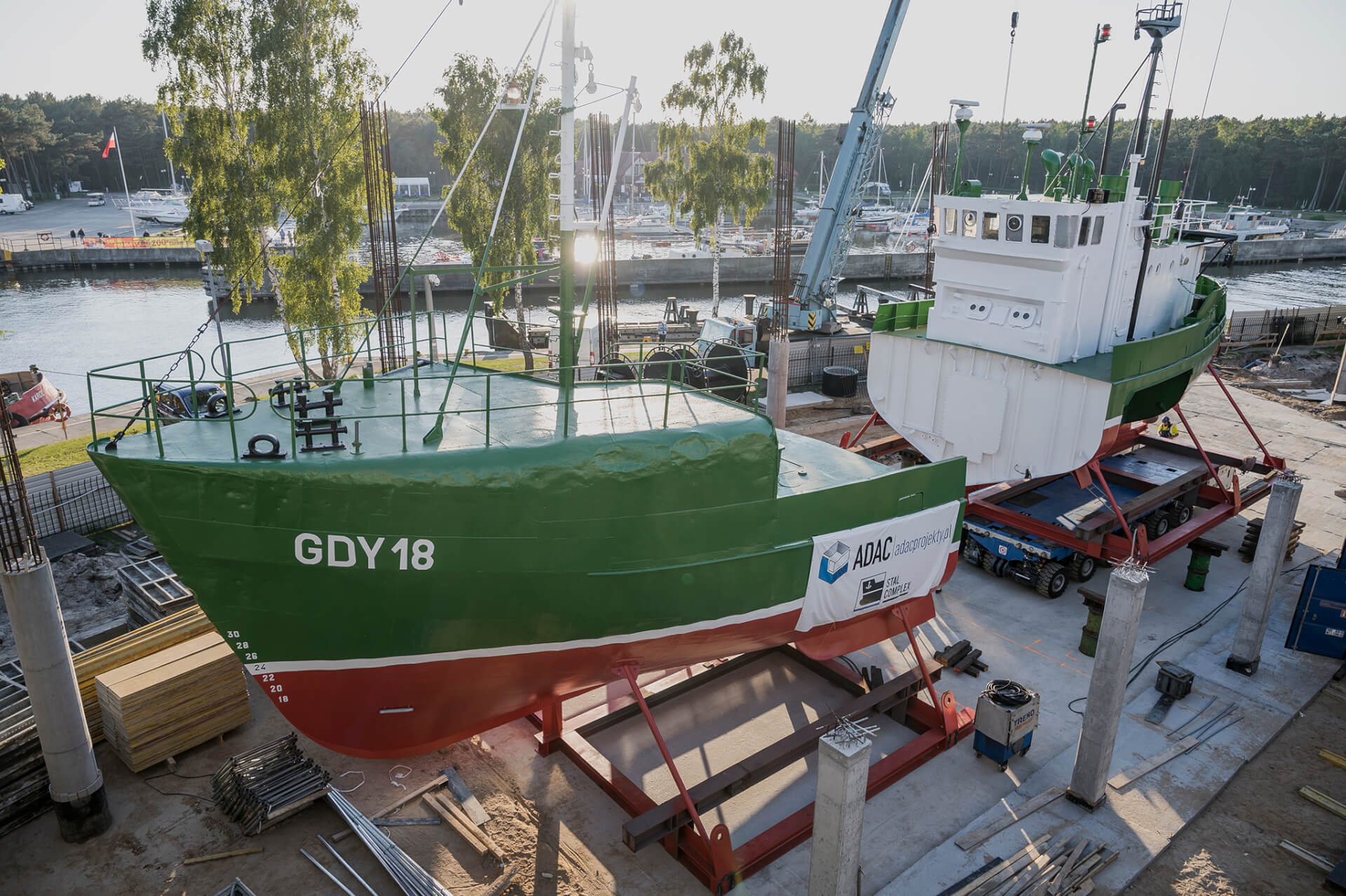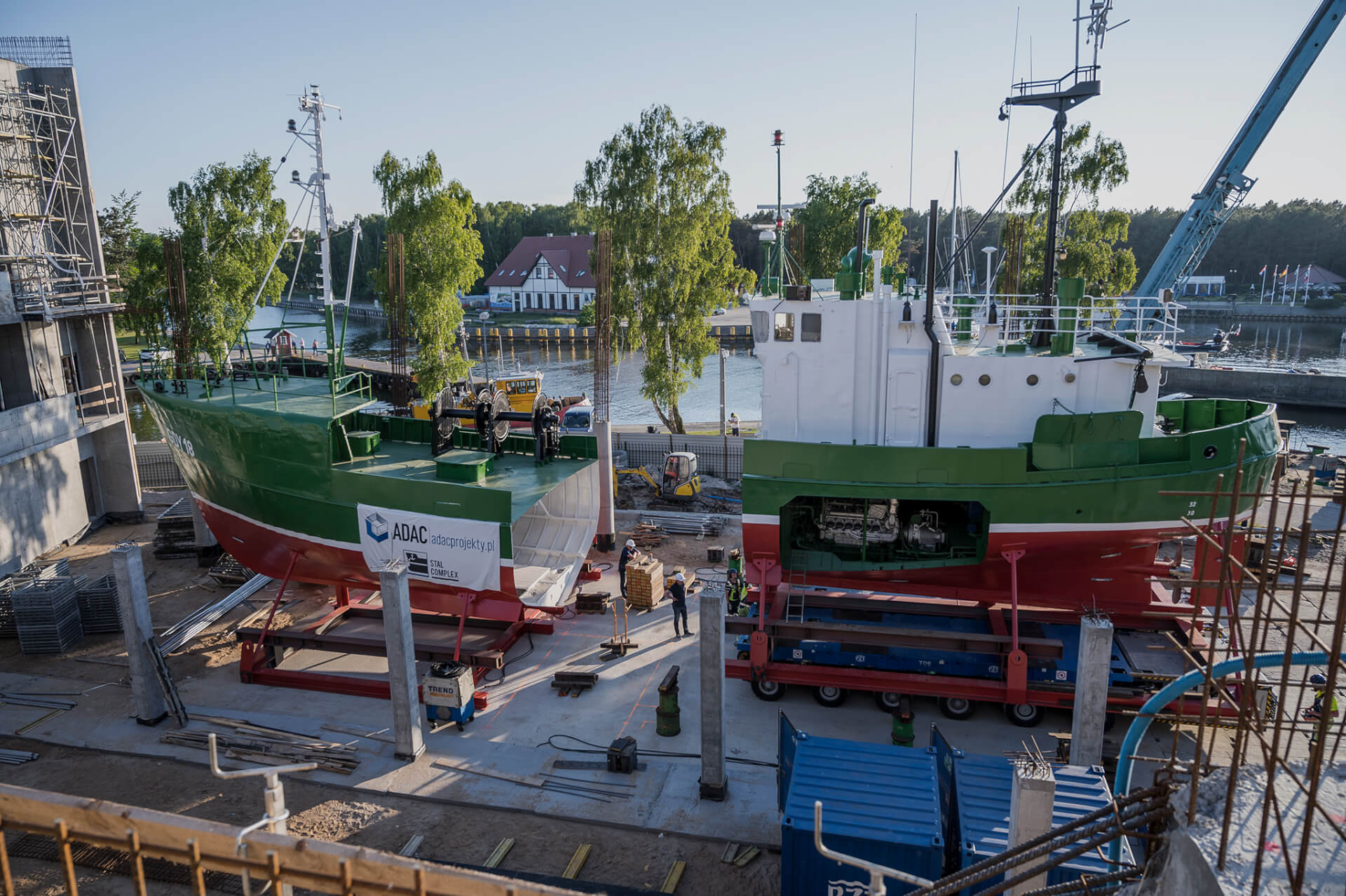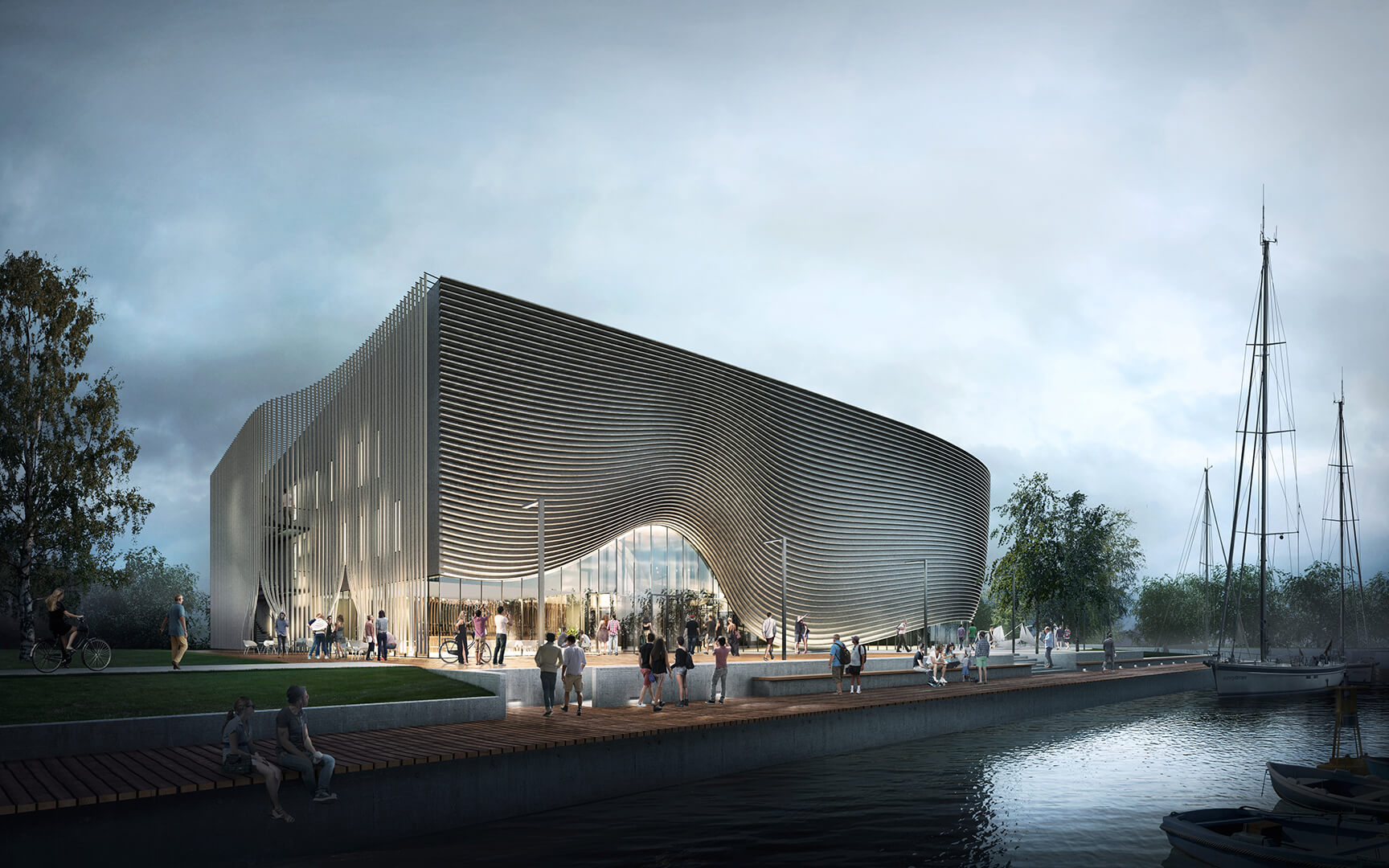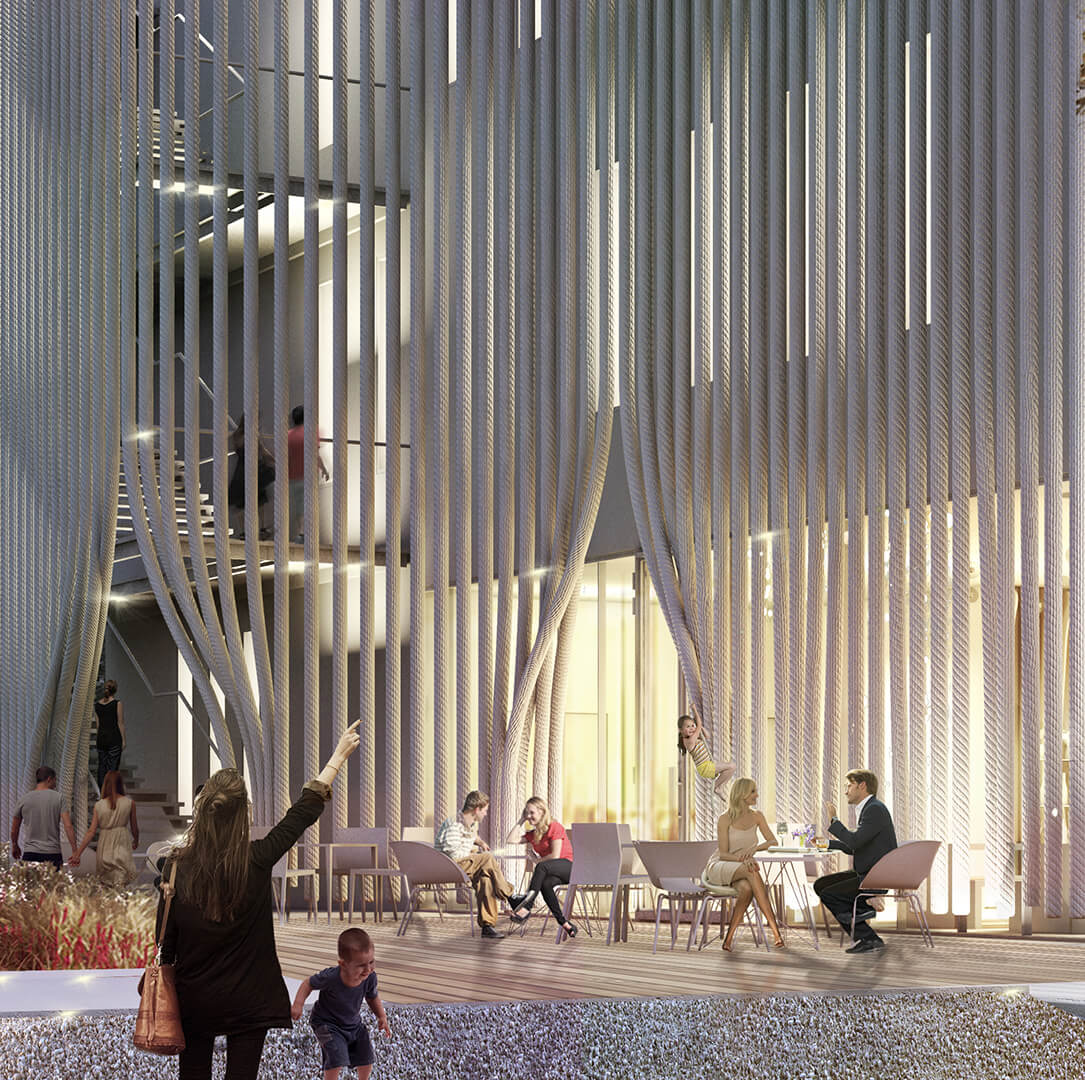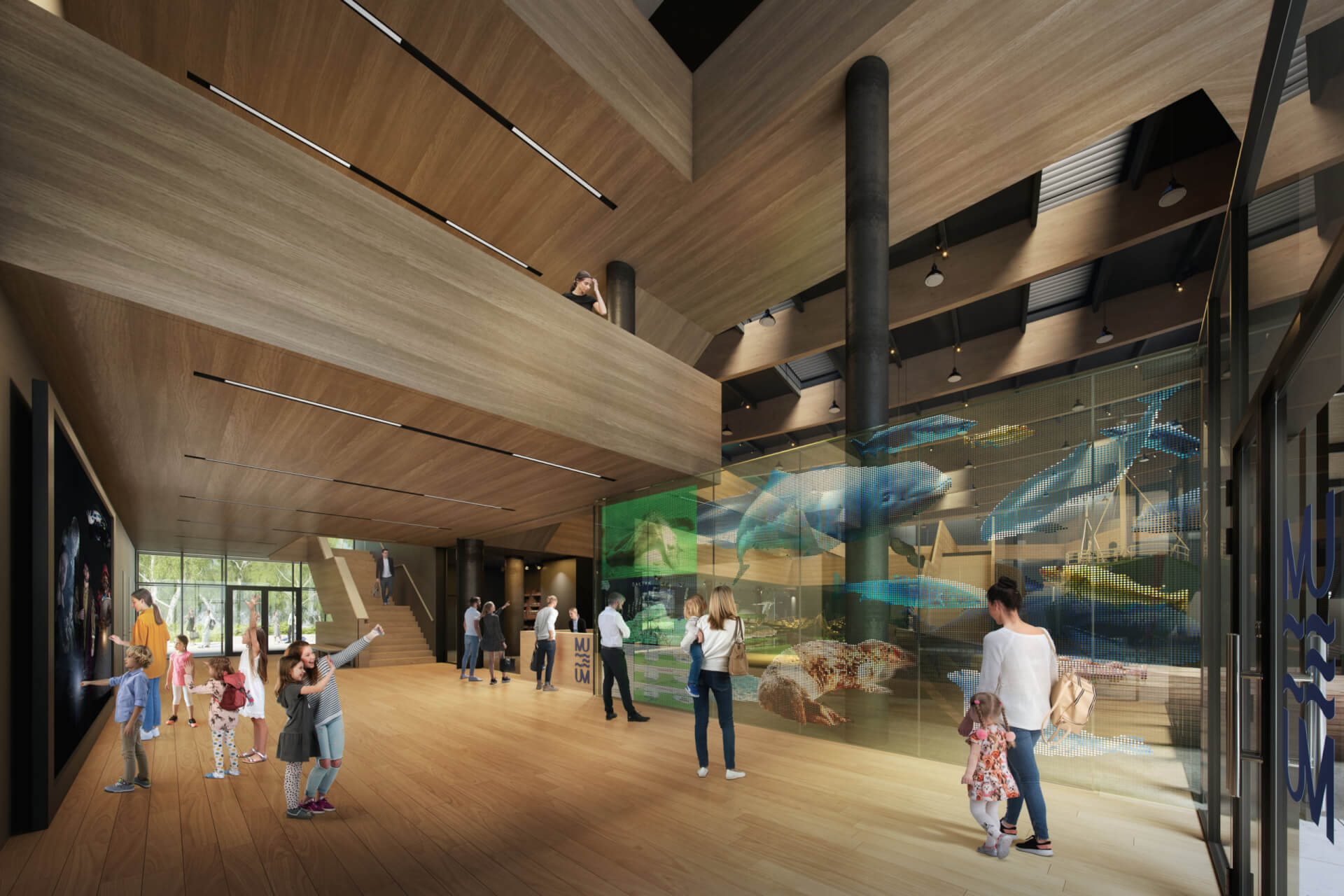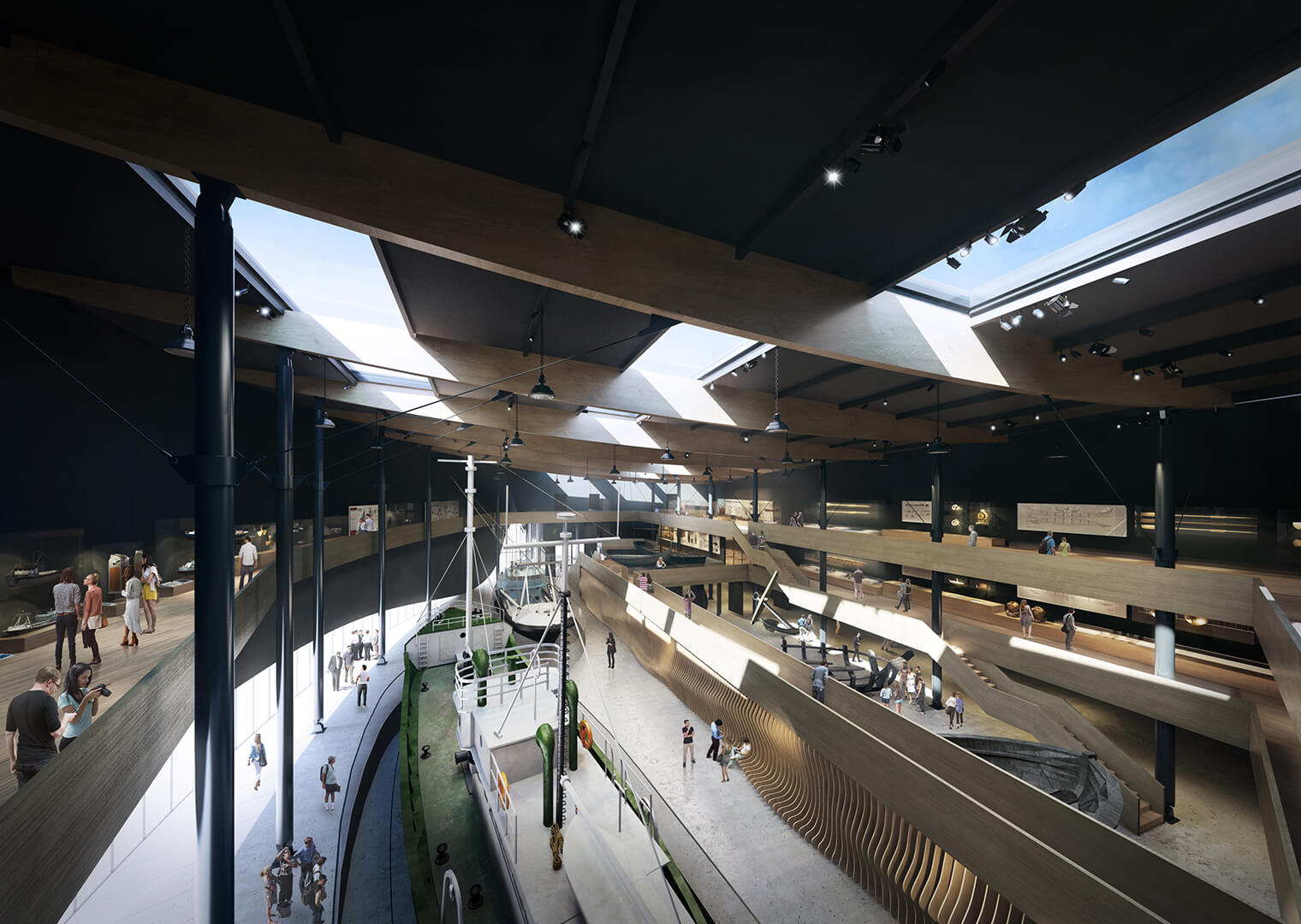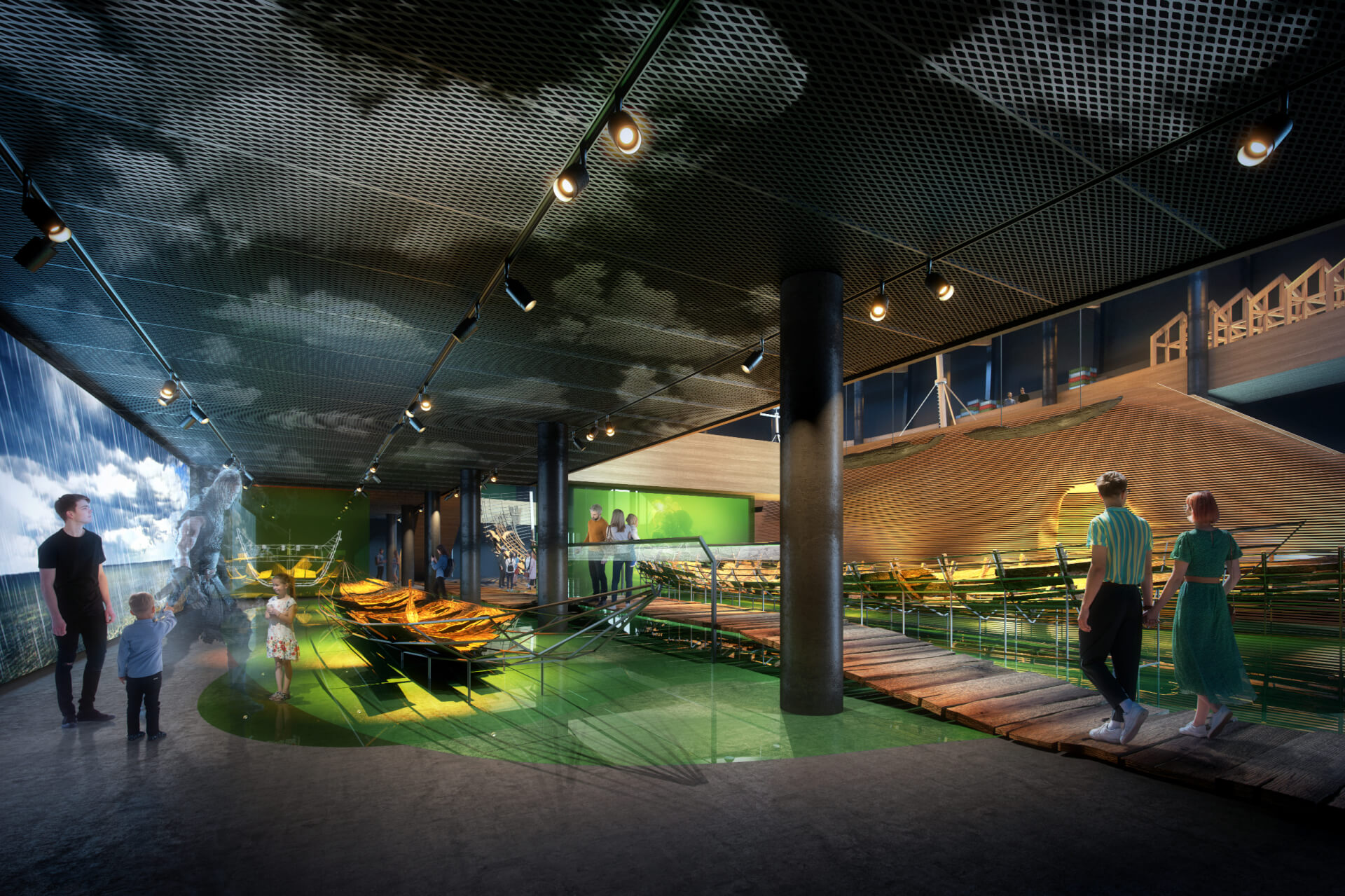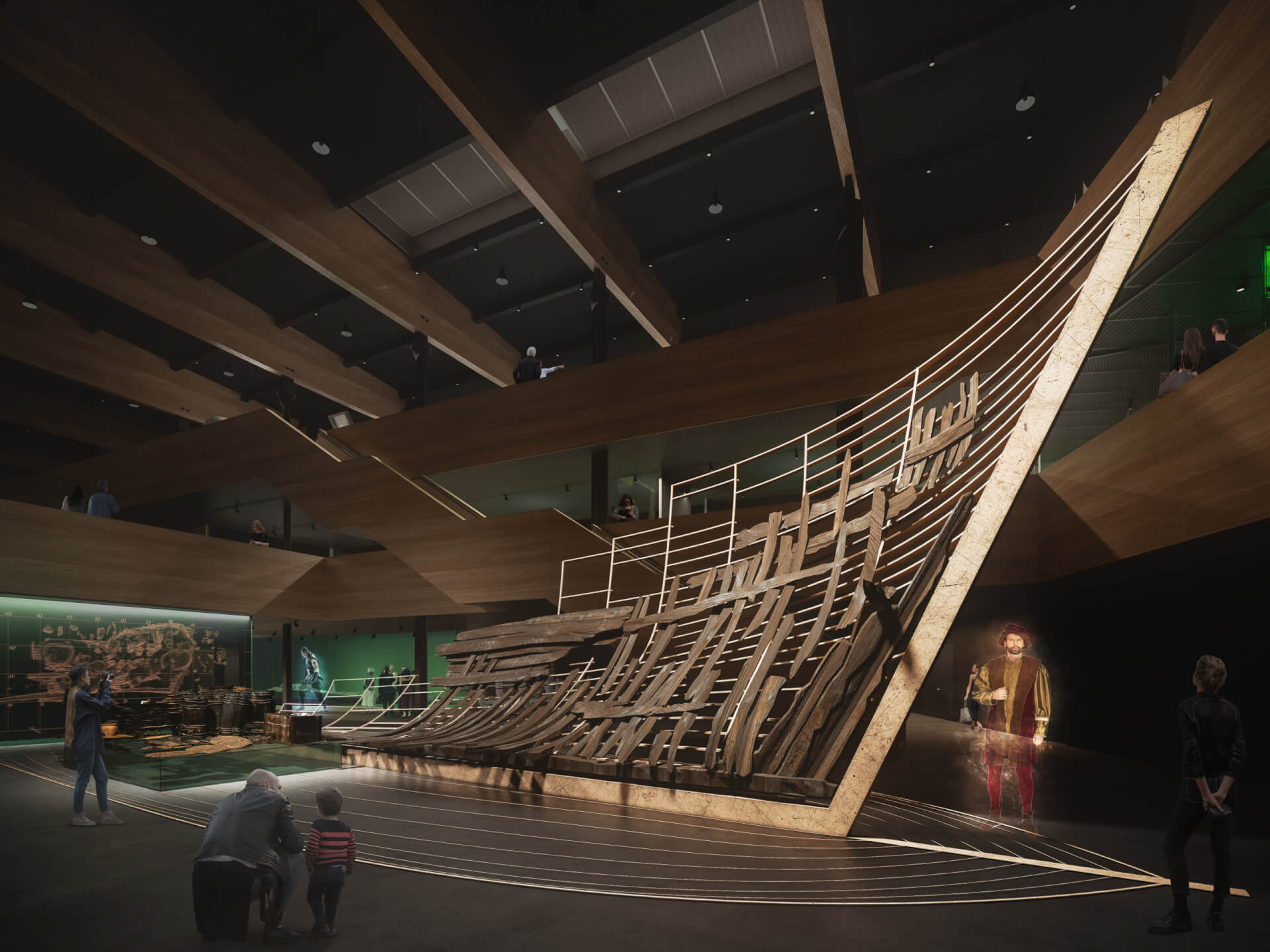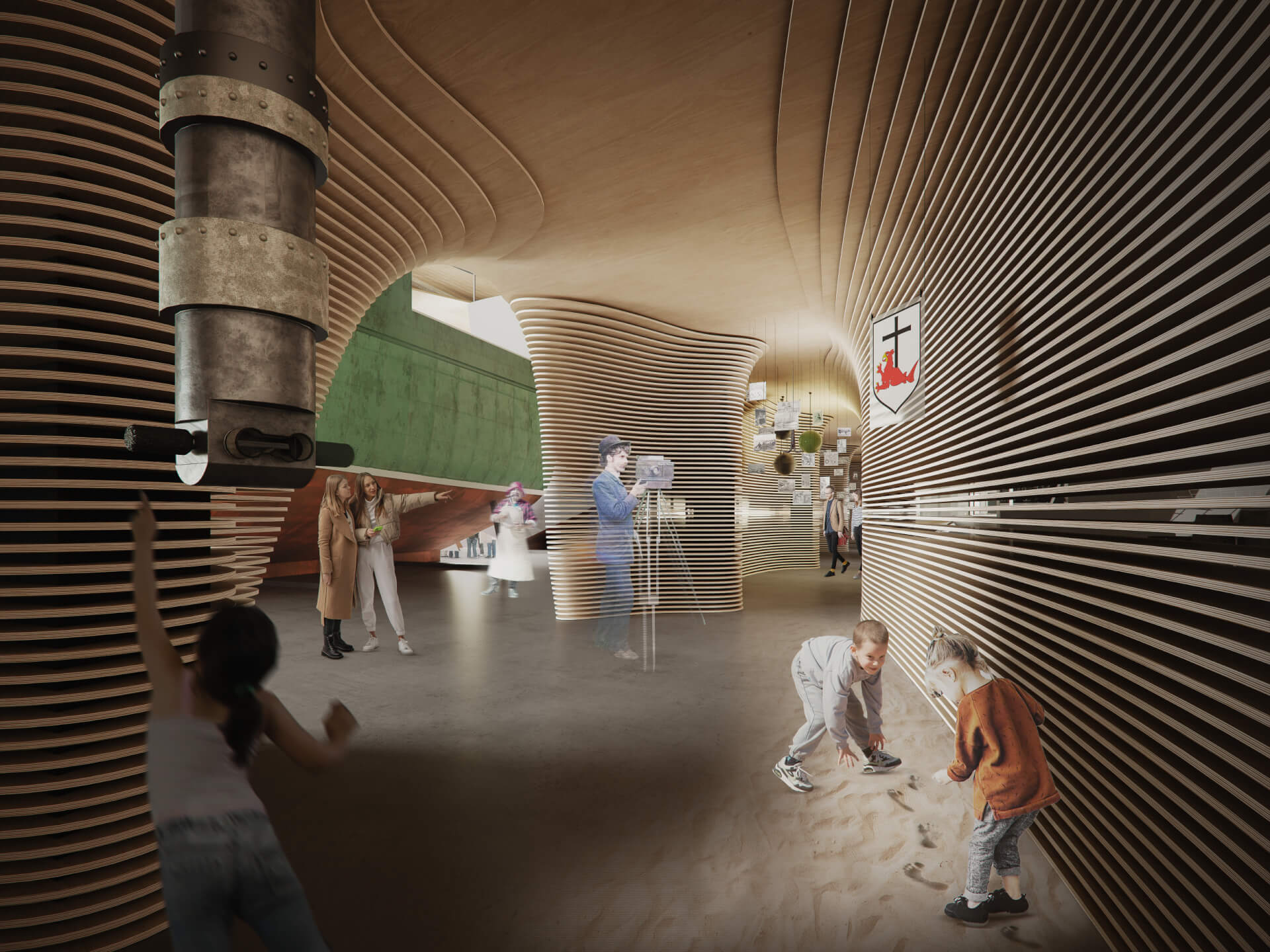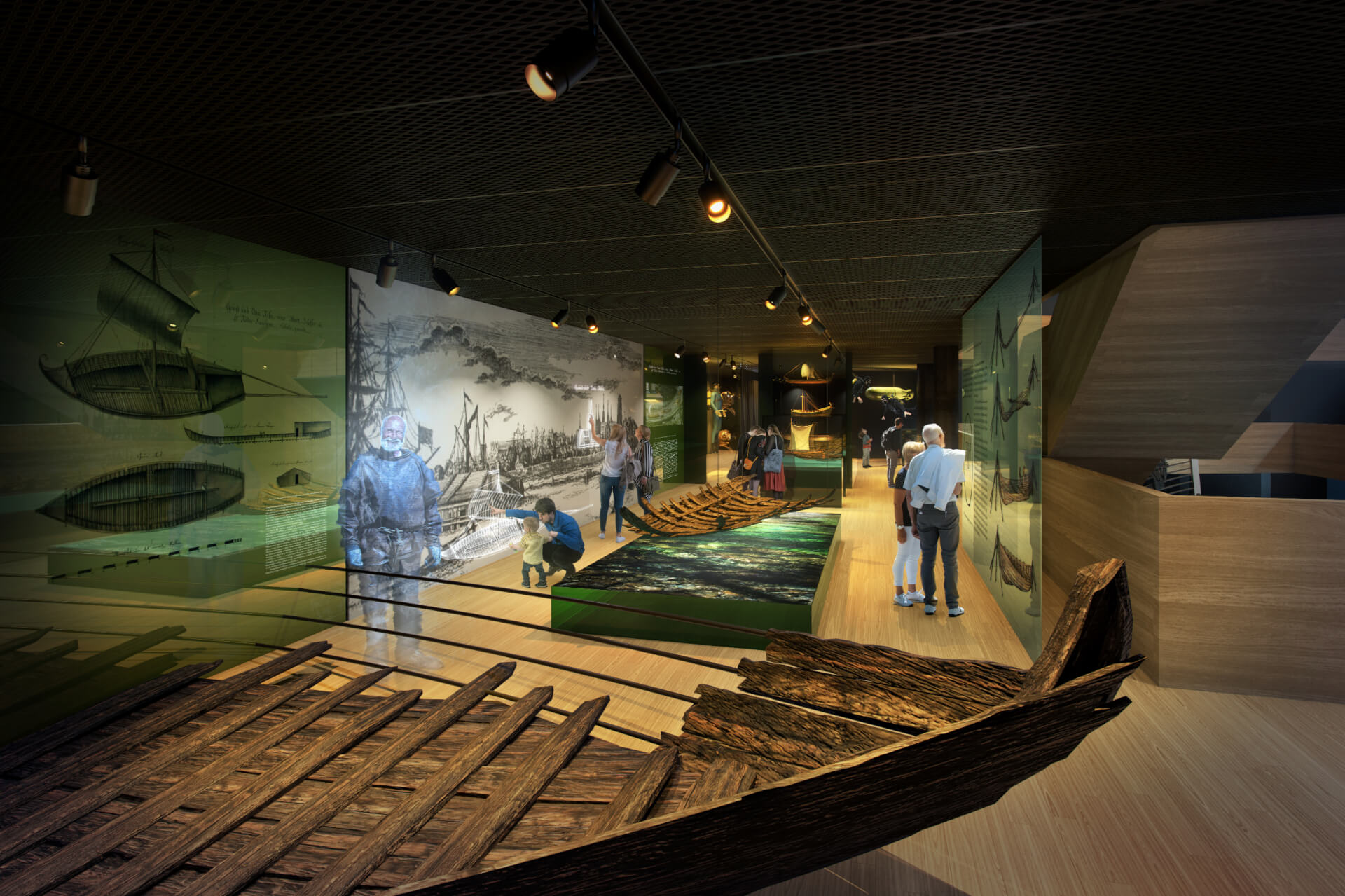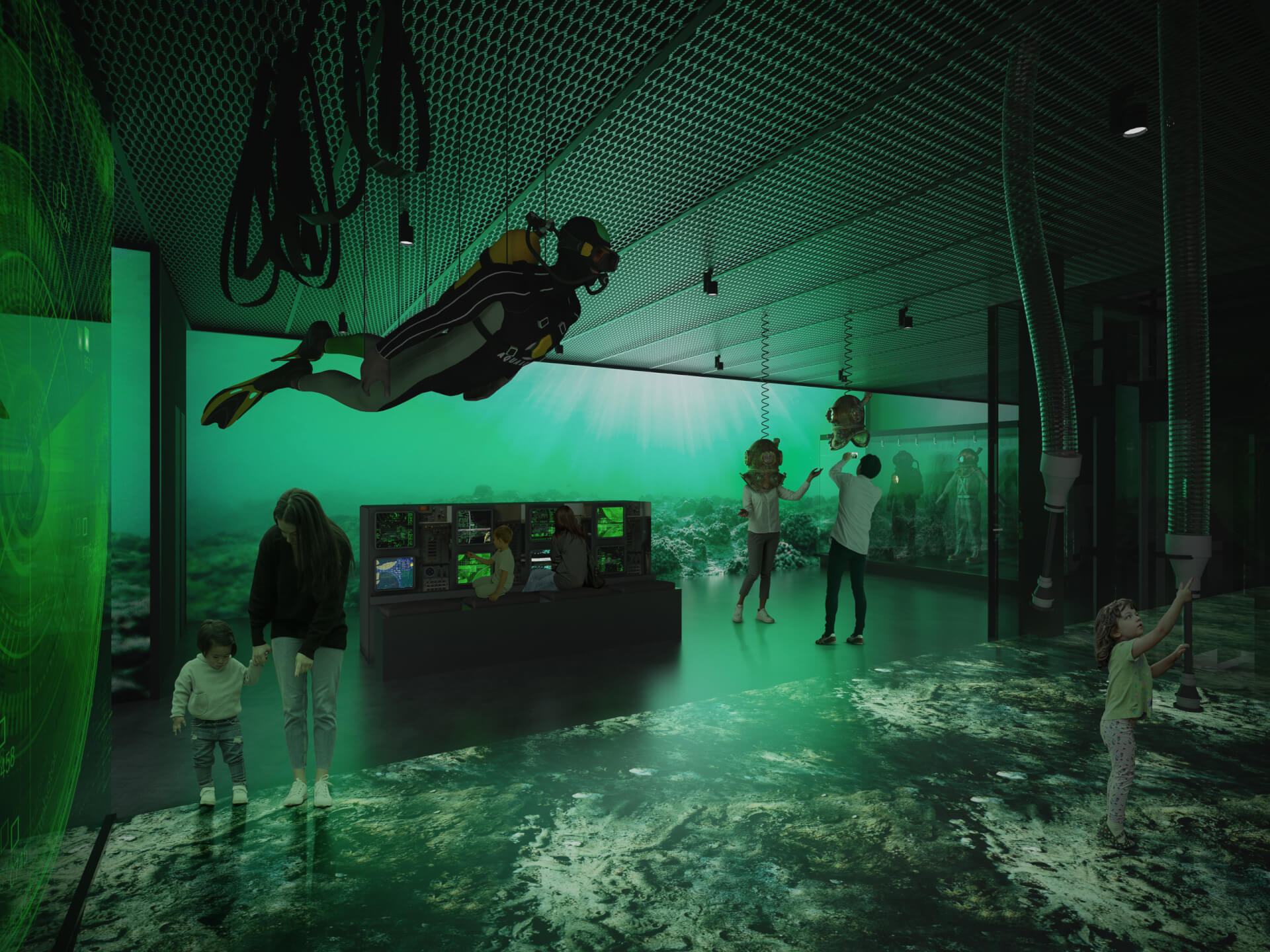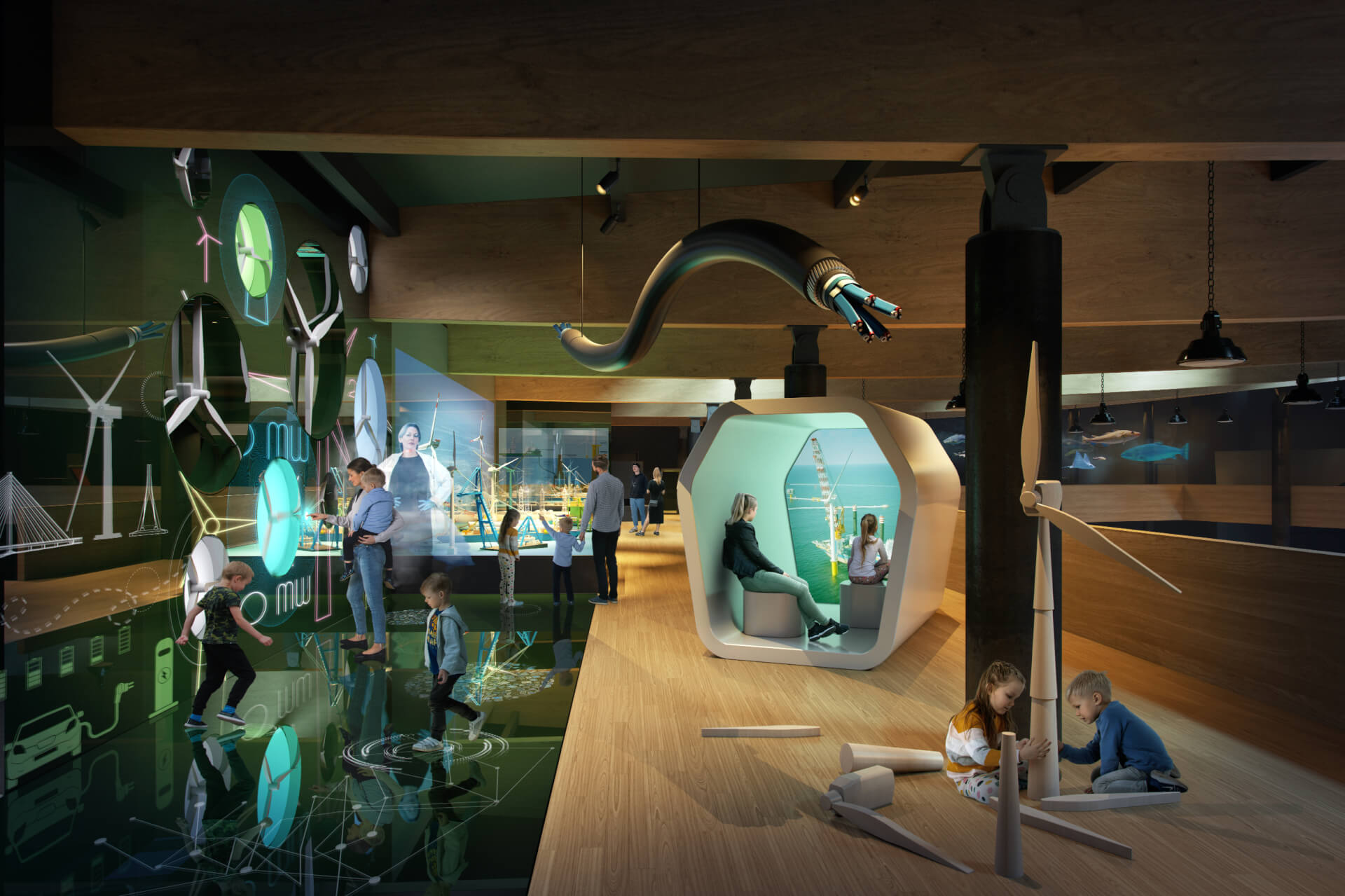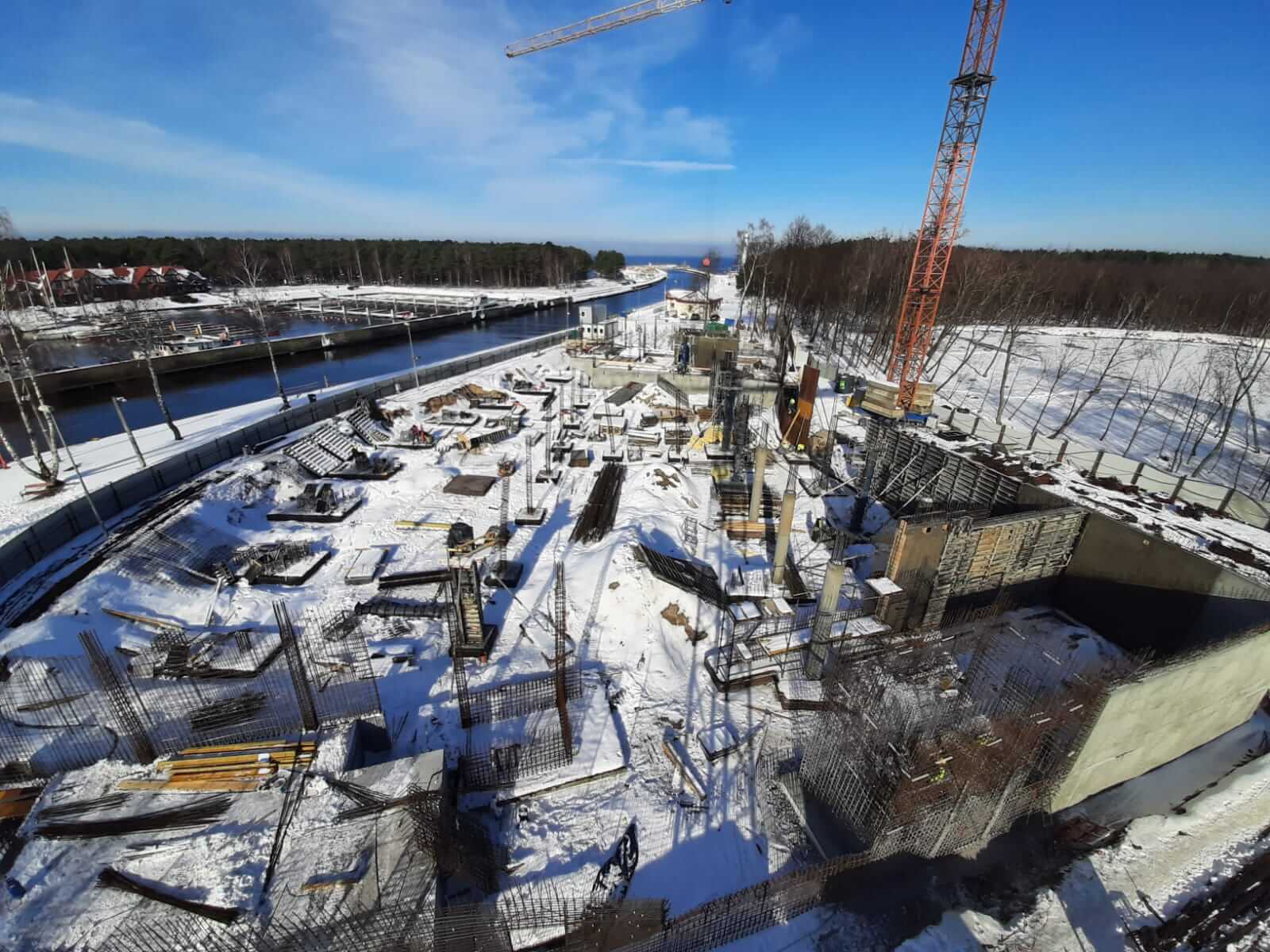maritime museum
My Dear Friend,
At daybreak I reached another port. The Slavic Coast, Łeba. I recalled a modest harbor with only a few fishing boats and a handful of people. Now, years later, I have a distinct impression that a shift, a transformation clearly took place. The port that welcomed me was no longer vacant. Even as I was docking, it was apparent that it bustled with life and energy previously unknown. And the port’s passageway? What took place is incredible! As it once served to connect the city and the port, it was empty and narrow… unpleasant to say the least, and now? It is bursting with life!!
I was compelled to learn the reason for this transformation and what caused the change since my previous visit. Ashore, trailing the port’s passageway along the canal in the direction of nearby vending stalls, I noticed a certain site, one of immense scale and distinction from its seaside scenery. From afar, the slab in its shape evoked a solitary ship docked in an abandoned harbor of our family town. On approach, I glimpsed a charming plaza – a casual widening of the boulevard and a crowd of people partaking in various pleasures. I observed families strolling with their children, tourists, joggers and crowds of youngsters… some lost in conversation, others gazing at two lit points in the harbor adorning the new wharf. I couldn’t resist, as I wanted so much to merge into this landscape. I took a seat beside the harbor.
Initially, what drew my attention was the northern facade. Vertical cords stretched in front of the rugged cement wall. They were thick and durable, reminiscent of windswept, old hemp ship ropes. They shimmered lightly, imbuing the massive slab with an effervescent quality of belonging to this very venue. I discerned a spacious glass plane. Guests sipped their afternoon coffee inside and around a building housing the restaurant. I suspect that their meals evoked the character of the surrounding seaside milieu. They surveyed yachts and fishing boats entering the harbor. Atop the building was a spacious viewing deck, where I saw people contemplating tranquil at that moment waters. Others gazed towards the city, already shrouded in afternoon fog.
The restaurant interior, seamlessly merging with the plaza in front of the side and main building facades, focused my attention in the direction of what seemed like the centerpiece of the building exterior. The dynamic arch of the main frontage from the side of the harbor inspired countless associations and recollections. I glimpsed a worn tree branch jettisoned by the sea onto the shore. It was carved and polished by months, if not years of drifting in the waters. I conjured waves with a trunk of a massive ship in their midst. The anterior facade appeared to “flow” softly into a spacious lobby, open on both sides of the building. I stood up and urged by the view of trees peeking on the other side of the passage, I set out to find out exactly what’s there. I traversed the facility. Led by the floor pattern, starting from the plaza, moving through the building and ending its course at Swan Pond, hidden amidst greenery. The entrance located in the largest hollow of the facade resembled a temporary canyon of suspended waves. The door unlatched before me and I found myself in a glass vestibule. I forged ahead and came upon an open grand entrance hall with a view of spacious exhibit lounges. Now I knew that I was in a museum. The Museum of Underwater Archeology and Fishing. Along the way, I overheard chatter from the restaurant and its adjoining lobby. The nice lady at the reception desk suggested a tour guide for the various exhibits. I agreed enthusiastically and we proceeded towards the exhibition area.
The tour guide informed me about the possibility of casual exhibit viewing or randomly seeing specific rooms, among them, temporary exhibits. He also mentioned that even though the present-day order is coherent in terms of subject and historical chronology, if I were to visit again in a few years, the displays and showcases could be rearranged and enhanced by new acquisitions. Relying on my tour guide, we proceeded along the suggested tour path. The lobby space along with the exhibit area was sectioned off with tall partitions that accommodated the various functional needs of the museum. The exhibition halls were truly spacious and a glimpse into one of themfrom the lobby beckoned the viewer by unveiling bits of the mystery about the showcased objects.
Upon entering the exhibit space, an obvious difference was immediately detected between the two sections. Interestingly enough, only on the ground floor. Before I tell you about the actual exhibit pieces, I will pause at the element dividing the two areas… A piece of furniture resembling the shape of a sand dune from Sowinski Park – wooden panels that formed an impressive sculpture – restricted at the top by an overpass from which the entire area was visible, as one would learn later. Imagine my surprise, when I saw that the dune was alive! Aside from prepared seats, the individual panels were retractable and it was there, that one could find some truly engaging interactive elements such as lessons in tying sailing knots or a navigation wheel simulator. And what a feeling, after all this time, to sense the resistance of turbulent waves with one’s hands. An awesome experience, especially for a child… I must return, once more, with my son. Some of the panels opened sideways, creating passages between the halls, thus allowing a multitude of arrangement possibilities. And while we’re at it…
The first of our rooms, transported us to the slavic times, when the maritime and inland traffic flourished, allowing for dynamic growth of the entire region. Shale boats, hanging or set within special display frames, even today, truly make an impression. Excavated from lake and river bottoms and skillfully reconstructed, they were a testament to the boatbuilding mastery of our forefathers. On the other side of the room, the tour guide revealed the most precious and valuable pieces of underwater archeology, among them, various elements of boat decks and sides. An intriguing solution to a common museum problem, one where access to collection pieces is obstructed, and here? Each piece of treasure could be circled and accessed up-close from all sides. Along the wall across from the dune wall, several curious cabins were placed…
The tour guide encouraged me to look inside, but wouldn’t reveal what’s hidden inside. Imagine that in these bins one could see what it was like under a wooden deck of an old boat, see a relevant film with special effects or experience underwater life at close range. Finally, the unfurled panels of the dune wall led me to the largest room… Bathed in light, an open expanse and a view of two graceful fishing boats took my breath away! The boats appeared to be sunken into special openings covered at half-point with glass. I was able to stand close and touch the legendary fishing unit, as well as descend to the level where I could see the boat from a perspective impossible in the port. You’d love that too!
Next, I continued to yet another level from which I could admire the reminder of large exhibits along with a multitude of awe inspiring showcases and interactive stations. Finally, the view from the topmost mezzanine! The scale of this site was astounding and its precisely placed viewing decks allowed me to peek aboard those fishing boats and slavic vessels from above. The icing on the cake in my day’s intellectual exploits was the temporary exhibit of Polish marine model builders. What a pleasure to delight in the masterpieces of such inspiration.
Filled with impressions from the day and still under the spell of the building, I returned to put pen to paper and share my emotions with you. As you well know, this place holds a special place in my heart and I delight in the fact that at last, Łeba has a place to celebrate its identity. Symbolically, this site inspired new life and energy, endowing its residents, guests and tourist alike. If you should find some time, my friend and the winds bring you here one day, a mandatory part of your visit must be the Marine Museum. I highly recommend it!
Greetings from sunny Łeba, where the elements rule!
 all
all 